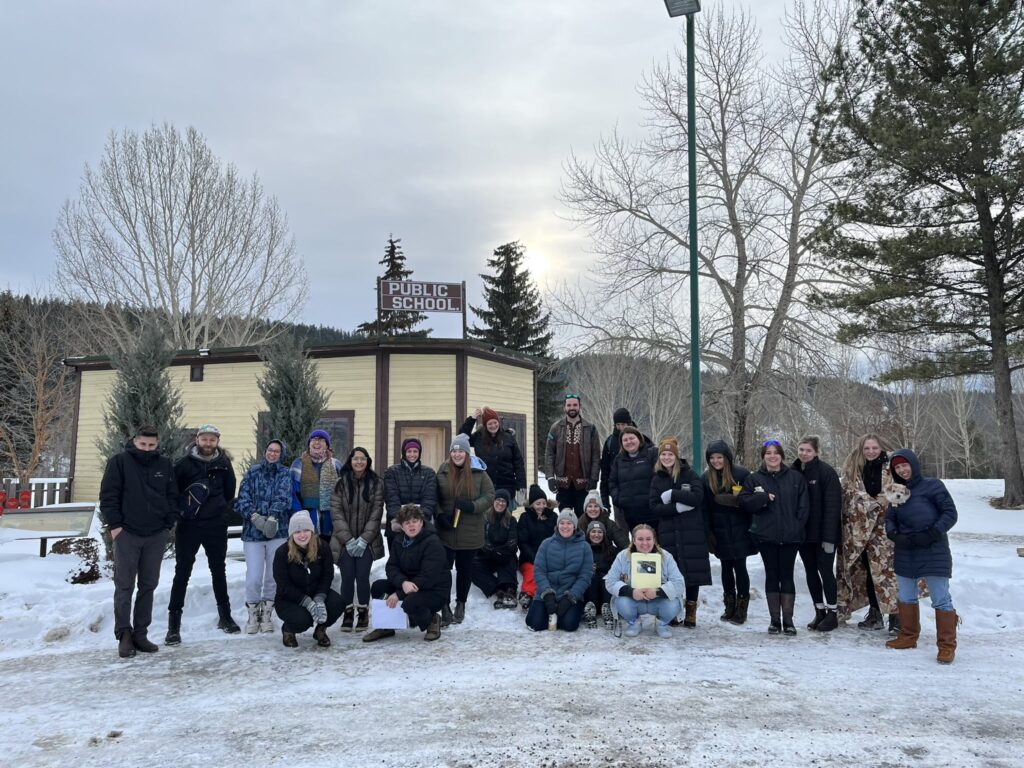In EDUC 405, we ventured out to Lheidli T’enneh Memorial Park where we had to opportunity to gather with our triad groups and think critically about the land we were walking on and try to image the history and the decisions that were made to the creation of what the park is today. We explored the land and discussed difficult conversations that steered us in the direction of creating a unique lesson plan that could be used one day in our own classrooms. It was interesting to change my once pervious perspective of the land, what I grew up as a child knowing it to be, to the tragedy that the land represents.
Lheidli T’enneh Park is a well known area of town that many people gather to for celebrations and events, or many people take their children to the park and water park, or even the memorial grounds that is placed within the traditional land. But many people do not have the knowledge of what the lands history entails and what many Indigenous peoples faced. It is important that we as teachers allow for the knowledge to be shared to our students in an age appropriate way so they history of the land is lived on and understood with deep meaning. We wanted to provoke thought and understanding through our lesson as we decided to create our lesson on the history, the present day, and the future.
Our lesson was based on a field trip to Lheidli T’enneh Park and starting off with a circle discussion on the lands history and the devastations that once took place. We then thought to make the activity group based with having students come up wth their own artistic creations of the land from a specific era that their are given. Students will then create their land map based on their own thoughts and ideas of what it may have looked like, what it does look like, and what it may potentially look like. We believed that this activity was a good way to have students think about the drastic changes that have happened and will continue to happen over time but also recognizing the importance of the meaning and history of the land and its peoples.
Our BEd cohort were able to create and plan for many different varieties of lessons that day and it was powerful to view the land as what it once was rather than what it has turned into. The field trip to Lheidli T’enneh Park enhanced our need for reconciliation and how it is important to share Indigenous history with our students and how they can activity take part in making a change.
